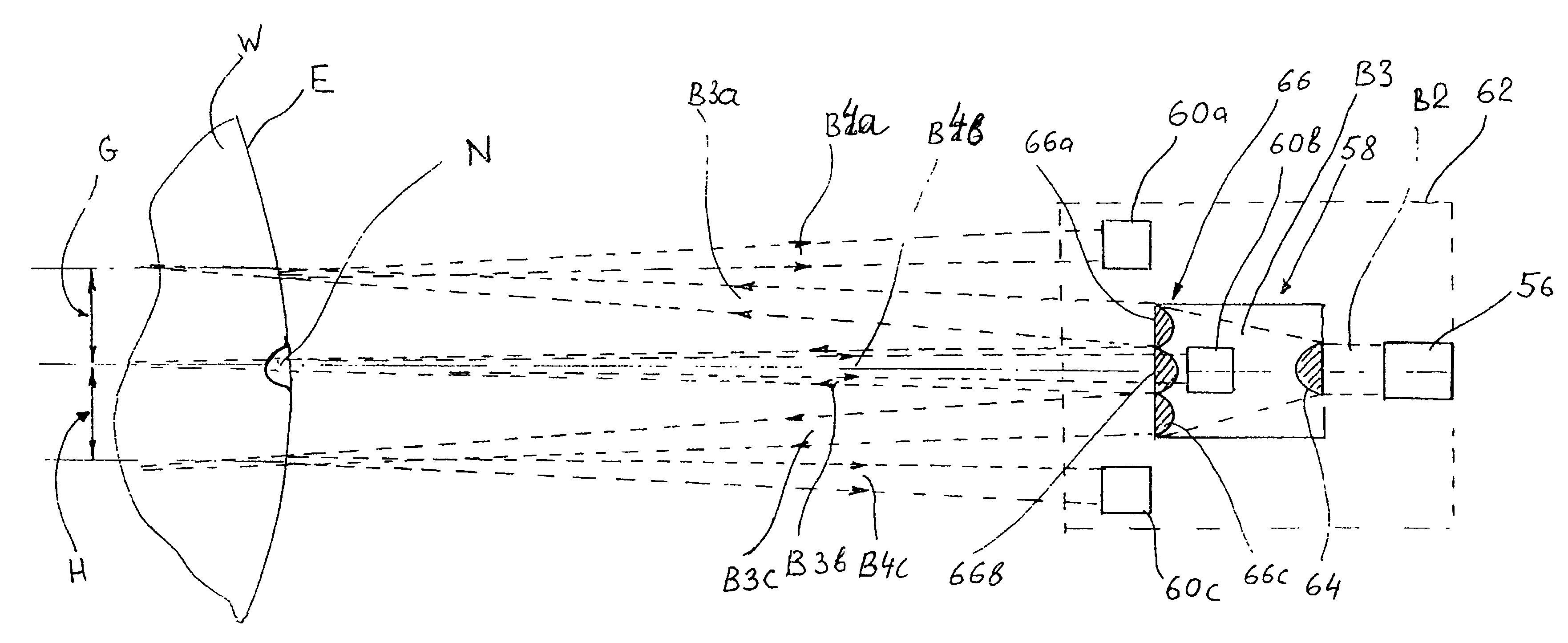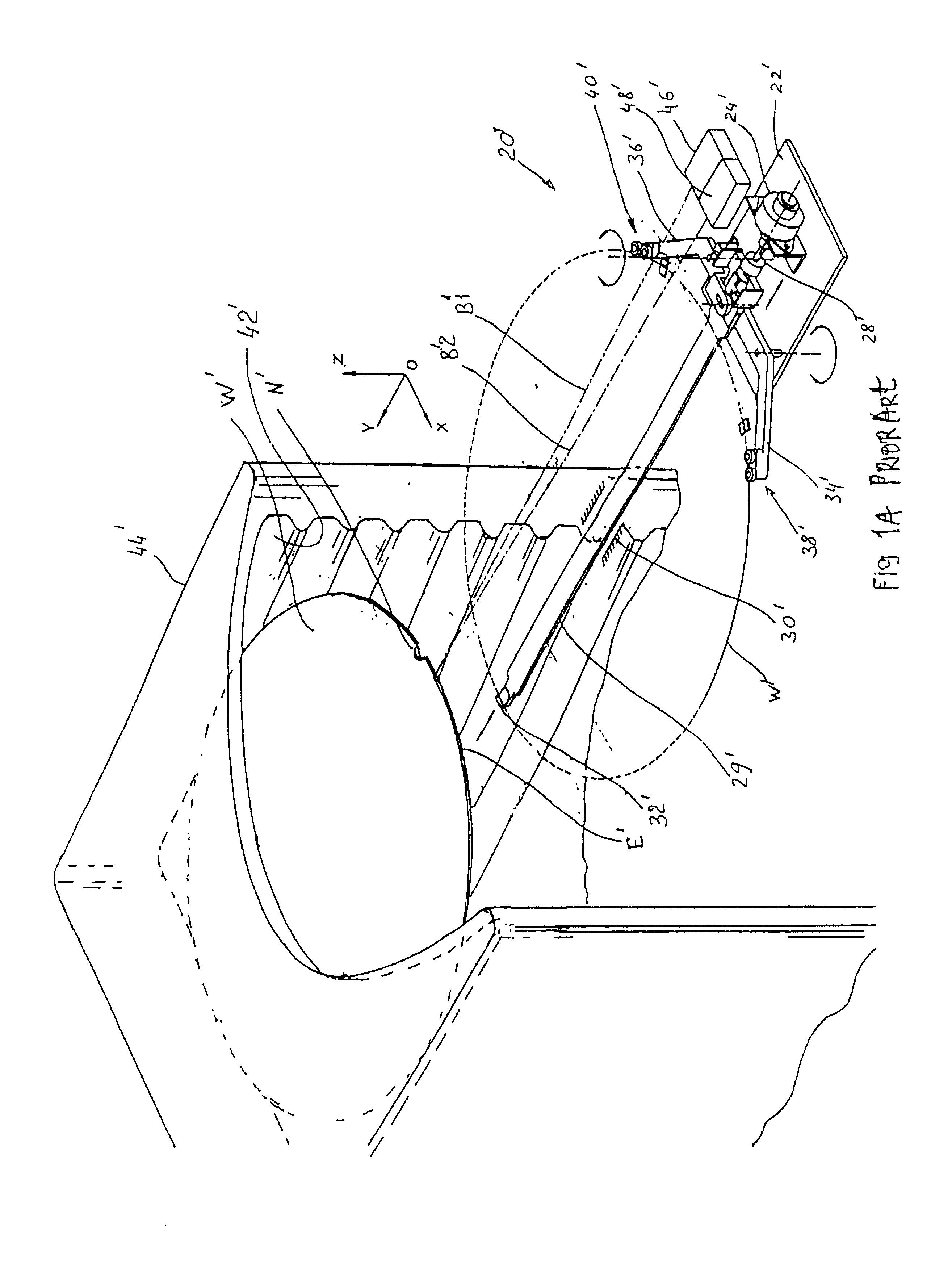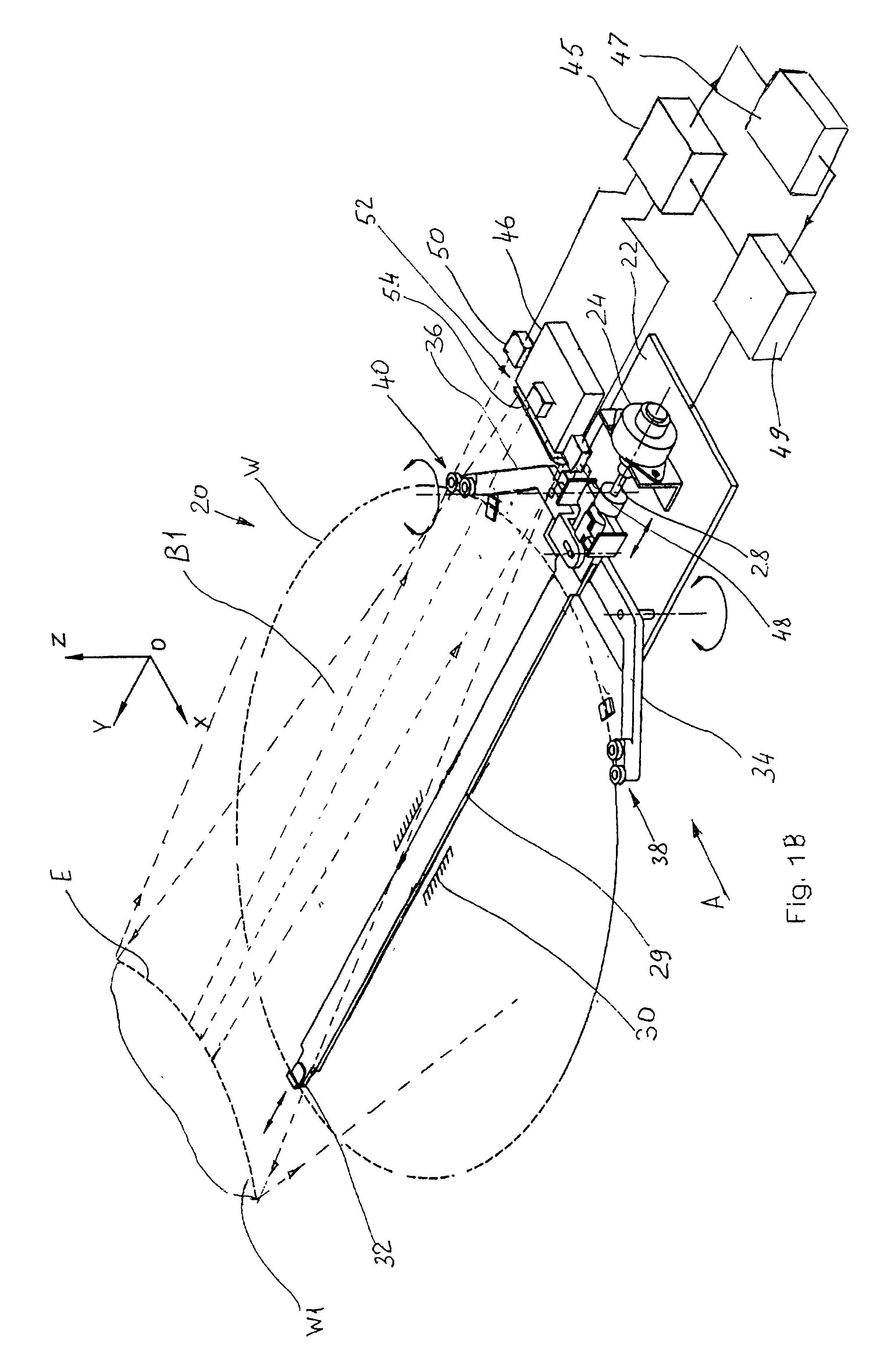Mapping sensor system for detecting positions of flat objects
a sensor system and flat object technology, applied in the direction of optical detection, material analysis, instruments, etc., can solve the problems of reducing process yield, affecting the accuracy of detecting the position of flat objects, etc., to achieve reliable operation
- Summary
- Abstract
- Description
- Claims
- Application Information
AI Technical Summary
Benefits of technology
Problems solved by technology
Method used
Image
Examples
Embodiment Construction
[0024]“The mapping sensor system of the present invention in conjuntion with a semiconductor wafer end effector, is shown in FIG. 1B which is a schematic three-dimensional view of the system” with the following—The mapping sensor system of the present invention in conjunction with an actuating mechanism, e.g., semiconductor wafer end effector, is shown in FIG. 1B which is a schematic three-dimensional view of the system.
[0025]The precision soft-touch gripping mechanism or end effector 20, which is used in conjunction with the mapping system of the invention has a mounting plate 22 attached to a robot arm (not shown). The plate 22 supports a stepper motor 24. The output shaft 28 of the stepper motor 24 is connected through a spring (not shown) to an elongated finger 29 that slides in a central longitudinal slot 30 of the plate 22 and supports a first wafer gripping post 32, pivotally supports two L-shaped fingers 34 and 36 with a second and third wafer gripping posts 38 and 40 on the...
PUM
| Property | Measurement | Unit |
|---|---|---|
| angle | aaaaa | aaaaa |
| angle of incidence | aaaaa | aaaaa |
| thickness | aaaaa | aaaaa |
Abstract
Description
Claims
Application Information
 Login to View More
Login to View More - R&D
- Intellectual Property
- Life Sciences
- Materials
- Tech Scout
- Unparalleled Data Quality
- Higher Quality Content
- 60% Fewer Hallucinations
Browse by: Latest US Patents, China's latest patents, Technical Efficacy Thesaurus, Application Domain, Technology Topic, Popular Technical Reports.
© 2025 PatSnap. All rights reserved.Legal|Privacy policy|Modern Slavery Act Transparency Statement|Sitemap|About US| Contact US: help@patsnap.com



